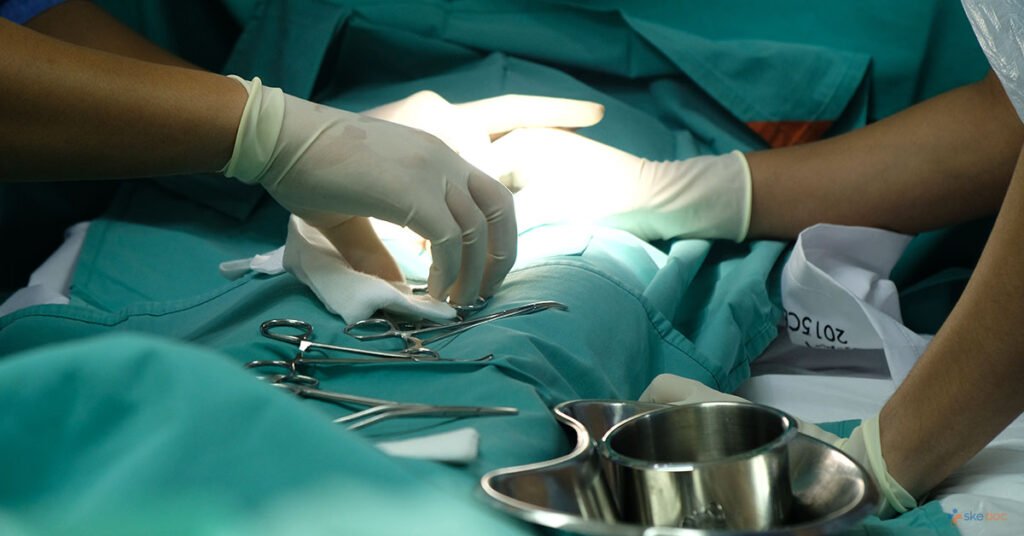
Top 5 Benefits of Circumcision
1) Reduces the Risk of STIs
2) Makes Penis Easier to Clean
3) Reduces the Risk of Cervical Cancer
4) Reduces the Risk of Contracting Urinary Tract Infections
5) Reduces the Risk of Penile Cancer
Circumcision is a surgical procedure involving the removal of the foreskin from the penis in males, Circumcision has been a topic of discussion so far. While opinions on this practice may vary, there are numerous benefits associated with male circumcision. In this comprehensive guide, we will explore the top benefits of circumcision and the risks associated with it under the expert guidance of the best urologist in Jaipur, Dr Ravi Gupta ( MBBS, MS, DNB ).
What is Circumcision in Males?
Circumcision is a surgical procedure in which the foreskin, the retractable fold of skin covering the head of the penis, is removed. This practice is commonly performed for cultural, religious, or medical reasons, and it is usually done during babyhood.
Why Circumcision is Needed?
Circumcision serves various purposes:-
- Because of religious or cultural traditions.
- Recommended by urologists to address specific health concerns.
- To reduce the risk of certain infections and diseases
Risks Included in Circumcision in Males?
Like any surgical procedure, circumcision does come with some big risks. These may include:-
- Bleeding
- Infection
- Or an adverse reaction to anesthesia
However, it’s essential to note that complications are relatively rare, and the procedure is generally considered safe when performed by trained professional urology surgeons.
Top 5 Benefits of Circumcision in Males:
Benefit No. 1) Reduces the Risk of STIs:
One of the most significant benefits of circumcision is the reduced risk of sexually transmitted infections (STIs). Numerous studies, including those conducted by organizations like the World Health Organization (WHO), have shown a lower susceptibility to HIV and other STIs among circumcised individuals. The removal of the foreskin is believed to decrease the likelihood of infection, making circumcision a proactive measure for sexual health.
Benefit No. 2) Makes Penis Easier to Clean:
A circumcised penis is generally easier to clean, making it one of the simple benefits of circumcision. Without the presence of the foreskin, there are fewer areas for bacteria and debris to accumulate. This improved hygiene reduces the risk of infections and inflammatory conditions. It also simplifies personal care routines, promoting overall genital health.
Benefit No. 3) Reduces the Risk of Cervical Cancer:
Studies have suggested that circumcision can contribute to a reduced risk of cervical cancer. This protective effect is believed to stem from a lower transmission rate of human papillomavirus (HPV), a known risk factor for cervical cancer.
Benefit No. 4) Reduces the Risk of Contracting Urinary Tract Infections:
Urinary tract infections (UTIs) are relatively common, especially in infants. Research indicates that circumcised males may have a lower chance of developing UTIs compared to their uncircumcised counterparts. This reduction in UTI risk is particularly crucial in the early stages of life when infants are more sensitive to infections.
Benefit No. 5) Reduces the Risk of Penile Cancer:
This is one of the top benefits of circumcision. Circumcision has been associated with a decreased risk of penile cancer. While penile cancer is rare, the removal of the foreskin eliminates the moist environment that may foster the development of cancerous cells. This benefit underscores the potential long-term advantages of circumcision in preserving male genital health.
Cost of Different Types of Circumcision in India
| Types of Treatment | Average Cost ( INR ) | Minimum Cost | Maximum Cost |
| Laser Circumcision | ₹32,000 | ₹30,000 | ₹35,000 |
| Traditional Circumcision | ₹7,000 | ₹3,000 | ₹10,000 |
| Prepuceplasty | ₹25,000 | ₹20,000 | ₹30,000 |
| Stapler Circumcision | ₹33,000 | ₹31,000 | ₹35,000 |
Percentage of Males who are Circumcised ( Ages 15 – 54 )
Source:- India in Pixels by Ashris
FAQs (Frequently Asked Questions):
1. Is there any pain in the circumcision procedure?
The circumcision procedure is typically performed under anesthesia to minimize discomfort. In infants, local anesthesia or numbing creams are commonly used. Adult circumcisions may involve different types of anesthesia, ensuring that the individual experiences minimal pain during the circumcision procedure.
2. Is it necessary to have a circumcision?
While circumcision is not necessary, it may be recommended for specific health reasons or cultural and religious beliefs. The decision to undergo circumcision is ultimately a personal one and should be made based on careful consideration.
3. What are the sexual benefits of circumcision?
Some individuals report enhanced sexual satisfaction and comfort post-circumcision. The removal of the foreskin may lead to a change in sensitivity, potentially reducing the risk of premature ejaculation in some cases. However, it’s crucial to note that individual experiences vary, and the impact on sexual function can be subjective.
4. What are the disadvantages of circumcision?
These may include the risk of complications during the procedure, such as bleeding or infection. Additionally, there is a recovery period after the procedure, during which care must be taken to avoid infections and ensure proper healing.
Conclusion
In conclusion, circumcision is a personal choice that involves cultural, religious, and medical considerations. Understanding the potential benefits of circumcision, risks, and frequently asked questions can empower individuals to make informed decisions about this surgical procedure.